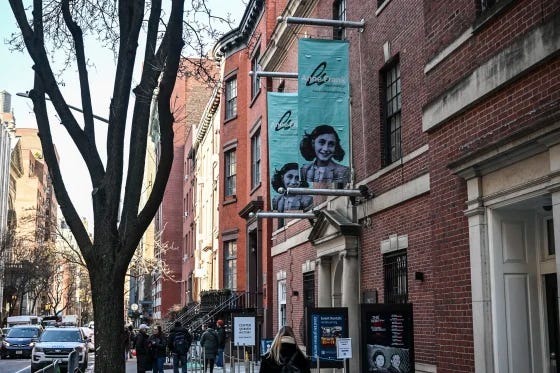Full-Scale Replica of Anne Frank's Hidden Annex Opens in New York City
The exhibit recreates the Frank family's secret hiding space, offering a powerful glimpse into their life during the Holocaust.
A full-scale replica of the hidden annex where Anne Frank wrote her famous diary opened in New York City on Monday, coinciding with International Holocaust Remembrance Day. The exhibit, hosted at the Center for Jewish History in Manhattan, marks the first time the secret annex has been fully recreated outside of Amsterdam, where the real annex is part of the Anne Frank House museum.
Unlike the original annex, which remains deliberately empty to maintain its historical integrity, the New York replica is furnished to reflect the five rooms as they would have appeared during the Frank family's two years in hiding. Visitors can see a detailed reconstruction of the writing desk where Anne Frank penned her diary, along with other furniture and personal items that would have been present at the time.
Ronald Leopold, director of the Anne Frank House, emphasized the importance of this immersive experience for educating visitors, particularly those who may never have the opportunity to visit Amsterdam. "We hope that this exhibit will touch people’s hearts because education is at the core of this project," Leopold said during the opening. "Education starts with empathy — understanding what happened to Anne Frank and her family."
The Frank family, along with four other Jewish individuals, hid in the attic of Otto Frank's office in Amsterdam during the Nazi occupation of the Netherlands in World War II. After being discovered in 1944, they were deported to concentration camps. Anne and her sister Margot died of typhus in the Bergen-Belsen camp in 1945, shortly before it was liberated by Soviet forces. Otto Frank was the only member of the annex to survive and later published his daughter’s diary, which remains one of the most significant works of the 20th century.
Hannah-Milena Elias, the granddaughter of Anne Frank’s cousin Buddy Elias, spoke emotionally about her visit to the exhibit. "It’s overwhelming and touching to see how such a tiny space was where the families lived for more than two years," said Elias, who is from Switzerland.
Her sister, Leyv-Anouk Elias, reflected on the broader lessons the exhibit offers. "History, unfortunately, repeats itself in different ways," she said. "We must be cautious and take action to prevent such tragedies from happening again."
The exhibit, which runs through April 30, spans over 7,500 square feet and includes more than 100 photographs and artifacts, many of which have never been displayed before. Among the items are Anne Frank’s first photo album, handwritten poetry, a replica of her famous diary, and nearly 80 translated editions of her diary. Also featured is the Oscar won by Shelley Winters for her role in the 1959 film "The Diary of Anne Frank."
The installation takes visitors through a chronological journey of the Frank family’s life, from their time in Germany before fleeing to Amsterdam, to their life in hiding and eventual betrayal.
Henry Byrne, a junior at Xavier High School in Manhattan, shared his reflections on the exhibit. "It taught me a lot about how just one story, one person’s life, can represent the millions who were lost during the Holocaust," the 16-year-old said. "Seeing all the beds and tables, it makes the history feel real."
The Anne Frank exhibit provides a poignant, educational experience that not only honors the memory of the Frank family but also serves as a powerful reminder of the need to combat discrimination and intolerance in today’s world.


